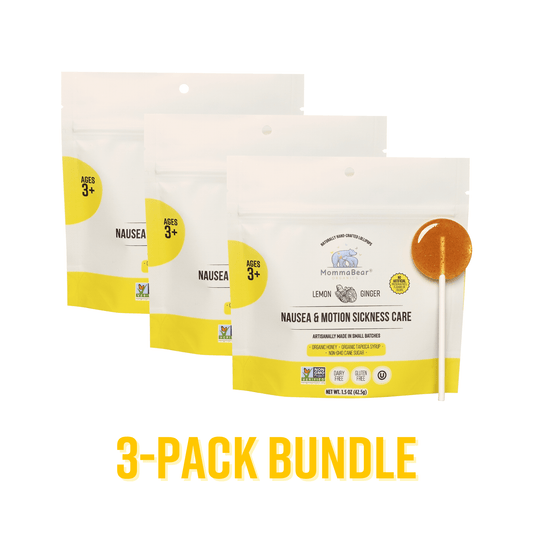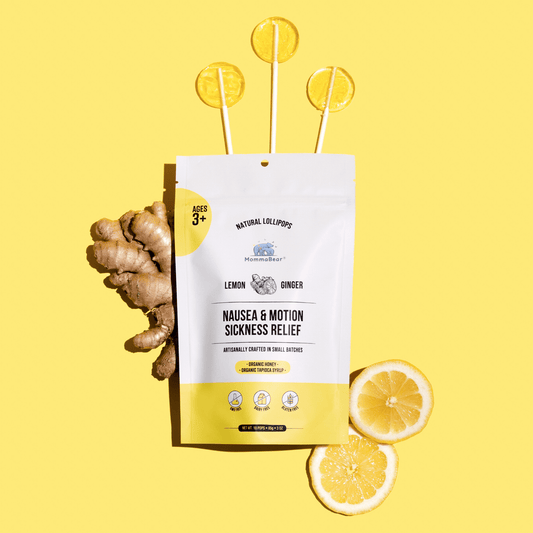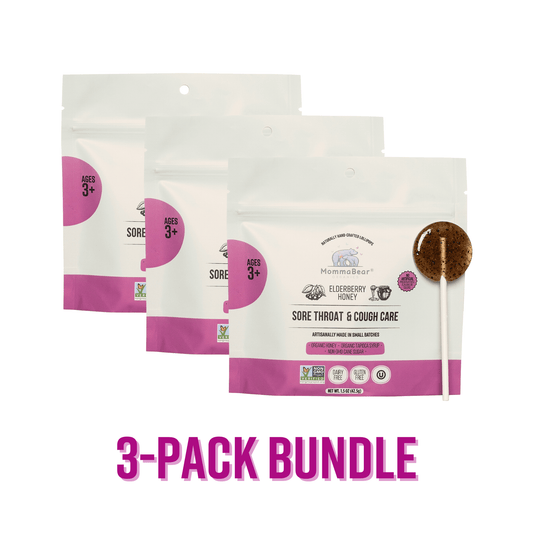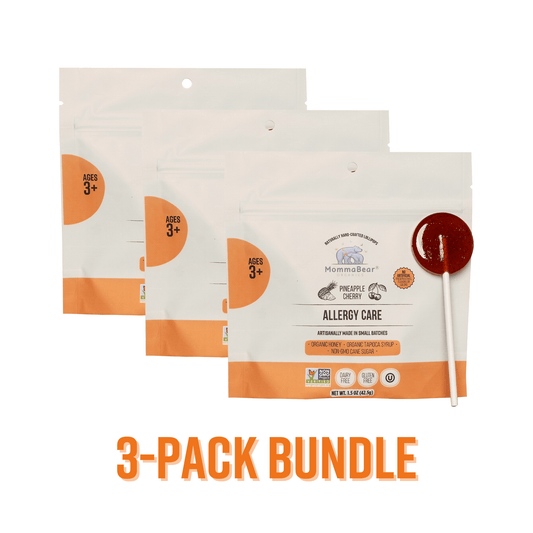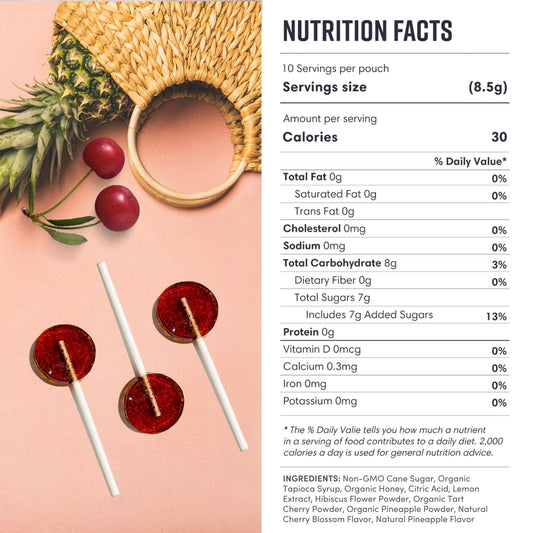Ugh, travel nausea. You're not alone if you're struggling with it—I feel like almost everyone I know gets at least a little queasy on a long car ride. It used to feel like you either had to take some heavy-duty medication that knocked you out or just suffer through it. But over the years, I've figured out a few things that actually, truly help, without all the weird side effects. So yeah, I wanted to share my little list of what works for me.
-
Ginger: This is my go-to. It just works. I’ve used it as tea, chewed on the candies, even taken capsules when I knew a bumpy ride was coming.
-
Peppermint: This one feels like it soothes your stomach from the inside out. Tea, little candies, or even just smelling the oil can make a difference.
-
Choose the Right Seat: I used to think this was a myth, but it's not. Where you sit makes a huge difference, especially in a car or on a plane.
-
Snacks: An empty stomach is a recipe for disaster, but so is a full one. Little, light snacks are key. Think crackers, a banana, that sort of thing.
-
Herbal Teas: A warm cup of ginger, peppermint, or chamomile tea just feels so settling. It's my little travel ritual now.
-
Vitamin B6: I read somewhere that B6 can help with nausea. You can find it in things like salmon and bananas.
-
Essential Oils: Sometimes just the scent of ginger, peppermint, or lavender is enough to calm everything down. A quick sniff can be a lifesaver.
-
Motion Sickness Lollipops: Honestly, these are a game-changer, especially with kids. Organic, ginger-based lollipops are so easy to use when you're on the move.
Quick Comparison Table
| Remedy | Best For | Usage Tips |
|---|---|---|
| Ginger | Quick nausea relief | Tea, capsules, or candies |
| Peppermint | Stomach comfort | Tea, lozenges, or aromatherapy |
| Proper Seating | Reducing motion impact | Sit near the front or stable areas |
| Light Snacks | Settling the stomach | Small portions, mild flavors |
| Herbal Teas | Digestive relief | Brew fresh ginger or mint tea |
| Vitamin B6 | Reducing nausea symptoms | Include in meals (e.g., salmon) |
| Essential Oils | Aromatherapy relief | Inhale or apply diluted oils |
| Motion Sickness Pops | On-the-go nausea solution | Organic ginger-based lollipops |
These are the simple things that have helped me stay comfortable and actually enjoy the journey. Okay, let’s get into the details.
Motion/Travel Sickness Relief | Natural Remedies | Vegan ...
1. Ginger: Quick Nausea Relief
I’ve always heard that ginger is good for an upset stomach, but I didn't realize how much science is actually behind it for travel-related nausea. It has these active compounds, I think one is called gingerol, that are supposedly as effective as some of the stuff you buy at the pharmacy, but you know, without making you feel all drowsy.
You can find it in a bunch of easy-to-use forms, which is great because sometimes you need one thing, and other times you need another.
This is my usual lineup:
| Form | Recommended Usage | Best For |
|---|---|---|
| Fresh Tea | 4 cups (950 ml) per day, sipped slowly | Long trips |
| Capsules | 1,000–1,500 mg divided into doses | Precise dosing |
| Candied Ginger | Use small pieces as needed | Easy portability |
| Essential Oil | Inhale as needed | Quick relief |
I remember reading this old study, I think it was in The Lancet, , that said ginger worked better than Dramamine for motion sickness. That really stuck with me. It just feels like a natural, solid option.
Safe Usage Guidelines
- Adults: Take 1,000–1,500 mg daily, split into smaller doses.
- Pregnant Women: Limit intake to 1 gram per day and avoid using it close to labor.
- Children: A 2021 study showed ginger reduced vomiting risk by 20% compared to a placebo.
Important Safety Note
Now, even though ginger is amazing, you still have to be smart about it. There are a few situations where you should probably talk to your doctor before you start taking a bunch of it.
- Take blood-thinning medications
- Have gallbladder issues
- Are pregnant with a history of miscarriage
- Have clotting disorders
The U.S. Food and Drug Administration has classified ginger as safe for preventing motion sickness. But again, it never hurts to check with a professional to make sure it’s right for you.
2. Peppermint for Stomach Comfort
Peppermint is another one of my favorites. It just helps everything feel a little calmer, you know? It has these compounds called menthol and menthone that are supposed to help relax the muscles in your stomach and just generally help with digestion. It's become a must-have in my travel bag.
How Peppermint Works
Here’s the simple way I think about how peppermint helps with that awful queasy feeling:
| Benefit | What It Does | Impact on Nausea |
|---|---|---|
| Muscle Relaxation | Eases gastrointestinal muscles | Reduces stomach tension and spasms |
| Digestive Support | Promotes better digestion | Enhances comfort during travel |
| Calming Effects | Provides soothing aromatherapy | Lessens the intensity of nausea |
Best Forms for Travel
Depending on what I need, I’ll grab one of these:
-
Aromatherapy Solutions
Someone told me that even just smelling peppermint can help, and I've found it to be so true. I read about a study from 2021 that showed it can really reduce nausea. I'll just put a couple of drops on a tissue, or use one of those little roll-on things on my temples. A tiny portable diffuser in the car is also a great idea.
-
Edible Choices
For longer-lasting relief, consider:- Sugar-free peppermint candies or lozenges
- Peppermint tea (steep for 5–10 minutes)
- Peppermint-infused water (add fresh leaves to cold water)
Safety Guidelines
While peppermint is generally safe, follow these tips to avoid issues:
- Always dilute essential oils with a carrier oil (like coconut oil) before applying to your skin.
- Test a small amount first to check for any reactions.
- I try to stick to for sugar-free products when choosing candies or lozenges.
- Let your peppermint tea cool down to room temperature; I find it works better that way.
I've noticed that if I use peppermint and make sure I have good airflow and a good seat, it works even better. It’s a great team player and works well with all the other natural remedies.
3. Seating and Air Flow Tips
Okay, this is a big one. Choosing the right seat and making sure you have fresh air can honestly make or break a trip for me. I used to brush it off, but it’s made a huge difference.
Best Seating Positions
It really, really matters where you sit. Here's a little cheat sheet I've developed over the years:
| Transportation | Best Seat | Why It Helps |
|---|---|---|
| Car | Front passenger seat | Offers better visibility and less motion impact |
| Plane | Over the wings (rows 10-30) | Experiences less turbulence and movement |
| Train | Forward-facing seats | Keeps your view aligned with the direction of travel |
| Boat | Upper deck | Lessens the sensation of motion |
"The wings are the more stable part of the plane, closer to the center of mass; the tail end tends to wiggle around the most."
- Dr. Quay Snyder, President of the Aviation Medicine Advisory Service
Why a Window Seat Helps
A window seat isn't just for the view—though that helps too! It lets you focus on the horizon, which helps your brain and your inner ear stay on the same page.
Jonny Knowlson explains:
"Sitting above the wings means that you're less likely to feel the full effects of the natural movements of an airplane, like the lift up, thrust forward, torque, gravity, and drag. Your stomach will be pleased."
Combine that good seat with some fresh air, and you're in much better shape.
Managing Airflow
- Point those little air-con vents right at your face. Staying cool helps so much.
-
If you can, crack a window or bring a little fan.
I read that a professor, Dr. Joseph M. Furman, professor of otolaryngology and neurology at the University of Pittsburgh Medical Center, said that cooler temperatures might help with motion sickness symptoms, and I totally agree.
Extra Positioning Tips
Try to keep your head as still as possible and face forward. If you can be the one driving, that’s even better. On a bus, I always try to snag a seat right up front.
4. Simple Snacks That Help
Snacking on light, simple foods can be a real lifesaver. You just have to be smart about it—small bites, and timing is everything. An empty stomach is just as bad as one that's too full.
Best Snack Options
Here’s what I usually pack:
| Snack Type | Benefits | How to Pack |
|---|---|---|
| Saltine Crackers | Helps reduce stomach acid and prevent vomiting | Small bag |
| Fresh Apple | Cleanses the stomach of nausea-causing chemicals | Whole or pre-sliced |
| Banana | Provides nutrients and starch to combat nausea | Container |
| Mixed Nuts | Restores energy and helps with queasiness | Small portions |
| Ginger Chews | Offers natural nausea relief | Original package |
Smart Snacking Tips
"Millions of people suffer from travel sickness, and it can really cast a shadow over their holiday plans...Eat small portions frequently; avoid heavy, greasy, or acidic foods as they worsen sickness because they are slower to digest. Always pick foods which are mild in taste and smell to stop the uneasiness of the stomach."
Natural Candy Options
Ginger candies that are sweetened naturally are my secret weapon. They satisfy that need for something sweet but also help with the nausea.
Timing Your Snacks
This is the really important part. It’s all about timing.
- Eat a little something every couple of hours so your stomach never feels overwhelmed.
- I like to have crackers with cool water. It just feels calming.
- Stick to things with mild flavors. Nothing too strong or spicy.
- Definitely stay away from greasy or acidic foods. They just sit in your stomach.
- Peppermint snacks are also great for settling things down
sbb-itb-e1a023f
5. Calming Herbal Teas
There's something so comforting about a warm cup of herbal tea. It's a simple, portable way to deal with travel nausea, and it can bring relief pretty quickly when you're on the go.
Best Herbal Teas for Nausea
These are my top picks:
| Tea Type | Benefits | Preparation Method |
|---|---|---|
| Ginger | Aids digestion when steeped for 10–20 minutes | Steep fresh, grated ginger in hot water |
| Peppermint | Relaxes stomach muscles and eases discomfort | Steep 10–15 crushed peppermint leaves |
| Chamomile | Soothes the digestive system | Steep 1 tablespoon (2 grams) in 1 cup (240 ml) hot water |
| Honey-Lemon | Lemon's aroma may ease nausea; honey adds sweetness | Mix 2 teaspoons each of lemon juice and honey into 1 cup (240 ml) hot water |
| Fennel | Promotes digestive health | Steep 1 teaspoon of dried fennel seeds for 5–10 minutes |
Expert Insights on Herbal Teas
"The natural compounds in mint, like menthol, are antispasmodic, which means they can help relax the stomach and intestine muscles", says Jessie Wong, MAcc, RDN, LD.
Handy Tips for Tea on the Go
- Pack Smart: I pre-measure my tea into little baggies. For ginger tea, I’ll grate a bunch and put enough for one cup in little containers.
-
Brewing Tips:
- Ginger tea: I drink up to 4 cups a day on long travel days.
- Peppermint tea: Let it steep for a good 10–15 minutes to get all the good stuff out.
- Chamomile tea: Use about 1 tablespoon per cup.
- Timing: I try to have a cup about 30 minutes before we leave, or as soon as I feel that first little wave of queasiness.
I've seen some research that says ginger tea is consistently better than a placebo for nausea. And in some cases, chamomile extract can be even more effective than ginger. So yeah, these teas are a great part of a whole nausea-fighting plan.
Safety Reminder
Most of these teas are totally safe, but I've read you should limit licorice tea to just one cup a day because it can have side effects. Just use good quality ingredients and let them steep long enough to work their magic.
6. B6 and Other Helpful Nutrients
This one was new to me a few years ago. Vitamin B6, or pyridoxine, can actually help with travel nausea. Adding it to your diet, along with some other nutrients, can really ease the symptoms.
I’m not totally sure how it works, but I read about a study where people taking vitamin B6 felt way less nauseous than people who took a placebo. It’s just another natural tool in the toolbox, you know? It works great alongside things like ginger and herbal teas.
Here are some foods that are packed with B6:
| Food Type | Portion Size | % Daily Value of B6 |
|---|---|---|
| Wild Atlantic Salmon | 5.4 oz (154 g) fillet | 85% |
| Chicken Breast | 1 medium, grilled | 69% |
| Baked Potato with Skin | 1 medium | 52% |
| Avocado | 1 whole fruit | 30% |
| Sweet Potato | 1 medium | 26% |
Other Nutrients That May Help
Besides B6, there are a few other things that might help:
- Vitamin C: I read about one study where only about a third of the people who took vitamin C got seasick, compared to almost two-thirds in the placebo group. Pretty interesting.
- Balanced Macronutrients: Eating meals that have a good mix of protein, fat, and carbs can also help settle your stomach.
Note: Ginger's benefits for nausea are detailed in Section 1.
Safety Tips
If you're thinking about taking B6 as a supplement, just be careful:
- Limit your intake to no more than 100 mg per day to avoid potential side effects.
- If you’re pregnant or considering supplementation, talk to your healthcare provider first.
- Super high doses can cause nerve issues, so it's best to get it from food if you can.
How to Incorporate B6 Into Your Routine
I just try to work B6-rich foods into my meals leading up to a trip. Pairing them with my usual ginger tea seems to be a pretty effective combo. Getting it from food just feels safer and you get all the other good nutrients that come along with it.
7. Scents That Stop Nausea
Sometimes, just a smell can change everything. Using essential oils has been a big help for me in calming down that queasy feeling. There’s research that suggests certain scents can settle your stomach and help with motion sickness.
Effective Essential Oils for Nausea
These are the ones I keep in my travel kit:
- Ginger Oil: It seems to help with how often and how intense the nausea gets.
- Peppermint Oil: This one is great for relaxing your stomach muscles.
- Lavender Oil: I use this one if I feel like my anxiety is making the nausea worse.
- Fennel Seed Oil: Helps with digestion and settles the stomach.
- Spearmint Oil: A bit milder than peppermint, but has a similar calming effect.
How to Use Essential Oils Safely
It’s important to use these correctly so they actually work and don’t irritate your skin. Here are the three ways I usually use them:
| Method | Instructions | Best For |
|---|---|---|
| Inhalation | Add 1–2 drops to a cotton ball or tissue | Quick relief while traveling |
| Topical | Dilute 3–5 drops in 1 oz of carrier oil | Long-lasting relief |
| Diffusion | Use a diffuser for 30 minutes in a ventilated space | Ideal for hotel rooms or cars |
These methods are all super easy to work into a travel routine.
Travel Tips for Essential Oils
To make things even easier when you're traveling:
- Keep your oils in bottles smaller than 3 ounces for flights.
- Put them in a sealed, leak-proof bag. Trust me on this one.
- I like to pre-dilute my oils before a trip so they're ready to go.
"Essential oils are natural and affordable options for managing the symptoms of vertigo, including nausea, headaches, and dizziness. Some of the options available for managing vertigo include peppermint, ginger, lavender, and lemon essential oils." – Medical News Today
Safety Guidelines
Just a few more things to keep in mind for safety:
- Test a little patch of skin first to make sure you're not sensitive.
- Try not to open the bottles on a plane; the smell can be strong for others.
- Make sure you have good ventilation if you're using a diffuser.
- For car trips, I'll put a cotton ball with a few drops of an anti-nausea blend on the window ledges.
And finally, try to get high-quality oils. The FDA doesn’t really regulate them, so sticking with a brand you trust is your best bet.
8. MommaBear Organics Motion Sickness Lollipops

Okay, so after trying all of these things for years, I finally decided to create something that put all the best remedies into one easy, on-the-go solution. Our Motion Sickness Lollipops combine the soothing power of ginger, the digestive help of lemon, and the natural sweetness of wildflower honey. It’s everything I trust, all in one little pop.
What's Inside?
I was really picky about the ingredients. Everything is organic and carefully chosen:
| Ingredient | Purpose |
|---|---|
| Organic Raw Wildflower Honey | A natural sweetener with antibacterial qualities |
| Organic Ginger Rhizome Dried Extract (16:1) | A traditional remedy for nausea |
| Organic Lemon Essential Oil | Helps support digestion |
| Organic Brown Rice Syrup | Acts as a natural binding agent |
Perfect for Travel
Each lollipop is wrapped up, so you can just toss them in your bag for road trips, flights, train rides, or boat journeys. One or two a day is usually all you need to help with motion sickness.
What Sets Them Apart
- Made in small batches to ensure top-notch quality
- Free from GMOs, gluten, dairy, and high fructose corn syrup
- Approved for ages 3 and up, with Parent Tested Parent Approved (PTPA) certification
This was all so important to me—creating something that was natural, effective, and that I'd feel good giving to my own family.
What Users Are Saying
It makes me so happy to hear that other people love them as much as we do:
"Digestion after meals is my first concern, but an upcoming long road trip gave me another idea for keeping ginger handy! I love the flavor and how it settles my tummy. I have already ordered more!"
– Lila B., Verified Buyer
With a 4.9 out of 5 stars rating, people seem to really like the strong ginger flavor and how easy they are to travel with.
Tips for Use and Storage
- Keep them in a cool, dry place.
- Pack them somewhere you can reach them easily during your trip.
- Make sure you bring enough for the whole journey!
With their organic ingredients and super convenient design, these lollipops have become my go-to for managing motion sickness naturally.
Conclusion
So, dealing with travel nausea really comes down to a mix of simple tricks and being prepared. It feels like so many people are prone to motion sickness, so having a few reliable strategies can completely change a trip.
For example, ginger is a powerhouse, and when you pair it with smart moves like picking the right seat and getting good airflow, it can really ease that awful feeling. Our MommaBear Organics Motion Sickness Lollipops were born out of all this trial and error, combining organic ginger, lemon, and honey into one easy-to-use solution. Here’s what one mom said:
"My two young kids have been asking for these daily. My household can't get enough. They have been great for car rides and on the go. They work for nausea and taste amazing!" - Lissa R.
To make the most of all these ideas, here’s a quick little guide I use:
| Timing | Recommended Actions |
|---|---|
| Before Travel | Try ginger supplements or lollipops to prevent nausea. |
| During Journey | Keep air flowing and focus on distant points of view. |
| When Symptoms Start | Use acupressure and calming scents for relief. |
| Throughout Trip | Stay hydrated and stick to light, balanced meals. |
It all comes down to planning ahead. Keeping things like the MommaBear Organics lollipops (starting at $24.99) on hand just makes everything simpler and more effective.
It’s funny, you spend so much time figuring out what works, and then it just becomes second nature. I don’t even really think about it anymore, it’s just part of our travel routine. And I guess that’s the goal, right? To get to a place where you’re not worried about feeling sick, you’re just excited about the adventure.
FAQs
What’s the best natural remedy for travel nausea, and how do I choose the right one for me?
Honestly, the "best" one is whatever works for you. It’s so personal. For me, ginger is a clear winner, but for my friend, it’s all about peppermint oil. You might have to try a few things to see what your body responds to.
If you don't know where to start, I'd say give ginger a try. It seems to be effective for a lot of people. If you want something super simple and hands-free, acupressure wristbands are great. Just be patient with yourself. You'll find your thing.
Are there any risks or side effects when using ginger or peppermint for travel nausea?
For the most part, they’re really safe, but it's good to know a few things. Sometimes ginger can give people mild heartburn or an upset stomach if they have too much. If you're pregnant, it's a good idea to chat with your doctor before taking high doses, especially as you get closer to your due date. Same goes if you have gallbladder issues or take blood thinners—just check with a doctor first.
Peppermint aromatherapy is generally fine. I guess if you inhaled a ton of it for a long time, it might make you feel a little queasy, but that’s pretty rare. The bottom line is just to use them in moderation and listen to your body.
Can I combine natural remedies to get better relief from travel nausea?
Oh, absolutely! I do it all the time. I might wear my acupressure bands while sipping on ginger tea and sniffing some peppermint oil. They often work even better together. Just start slow if you're trying something new, to make sure you don't have any weird reactions.
And like with anything, if you have any health concerns or are on medication, it’s always smart to run it by your doctor before you start mixing and matching a bunch of remedies.


